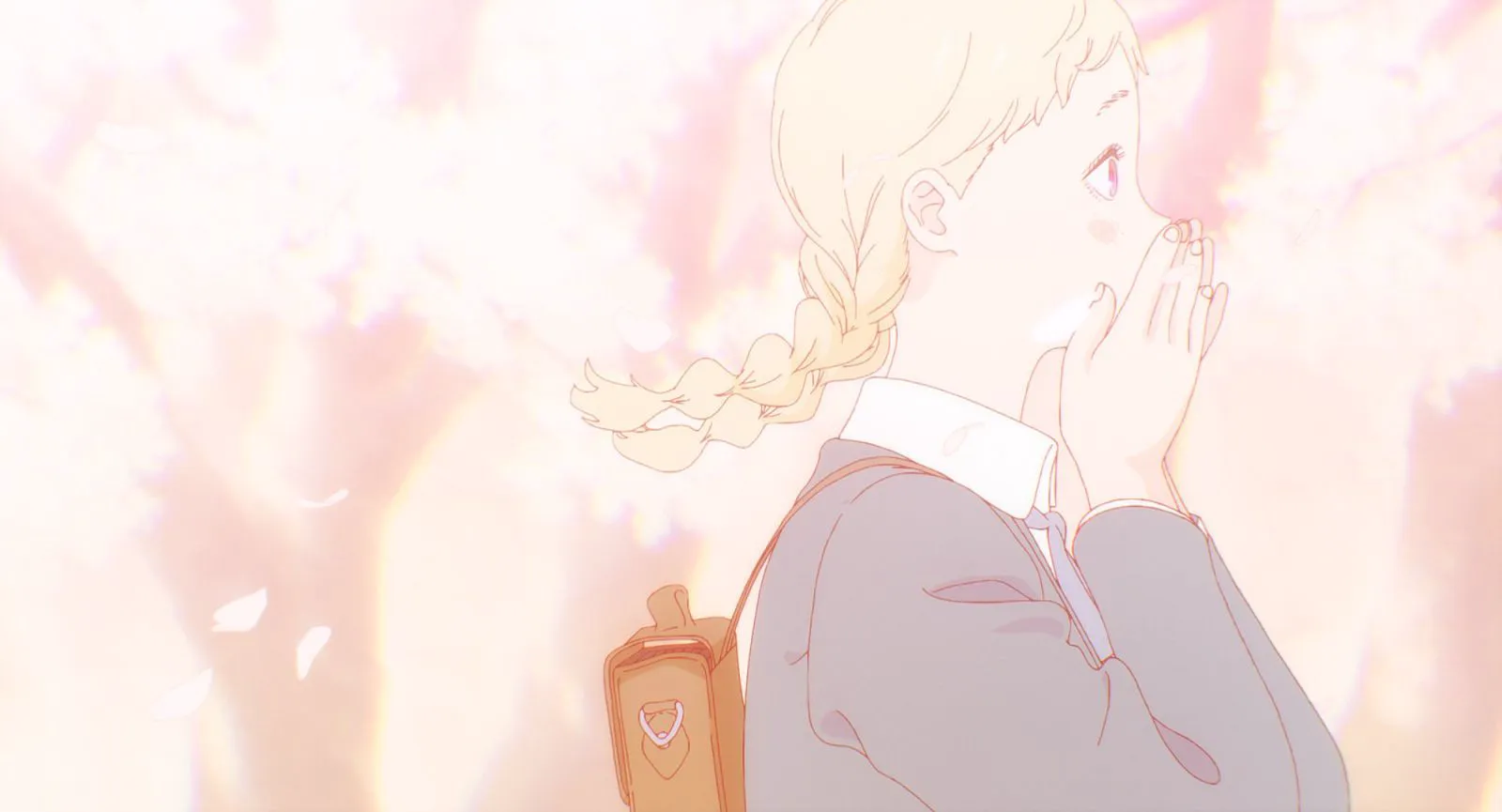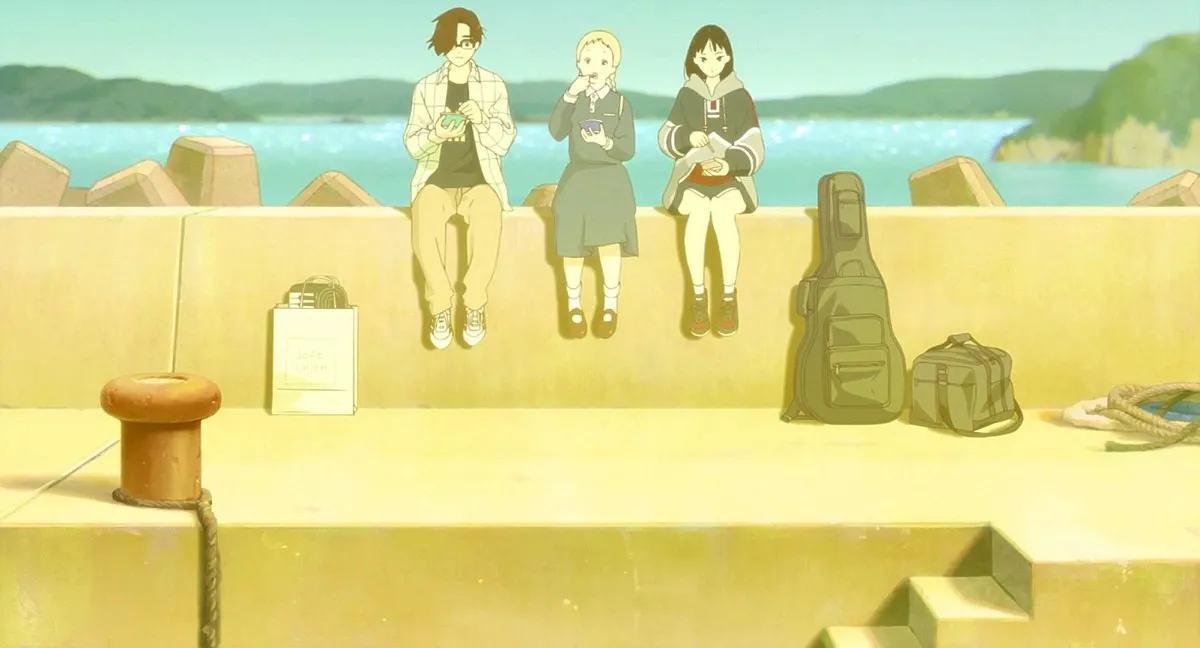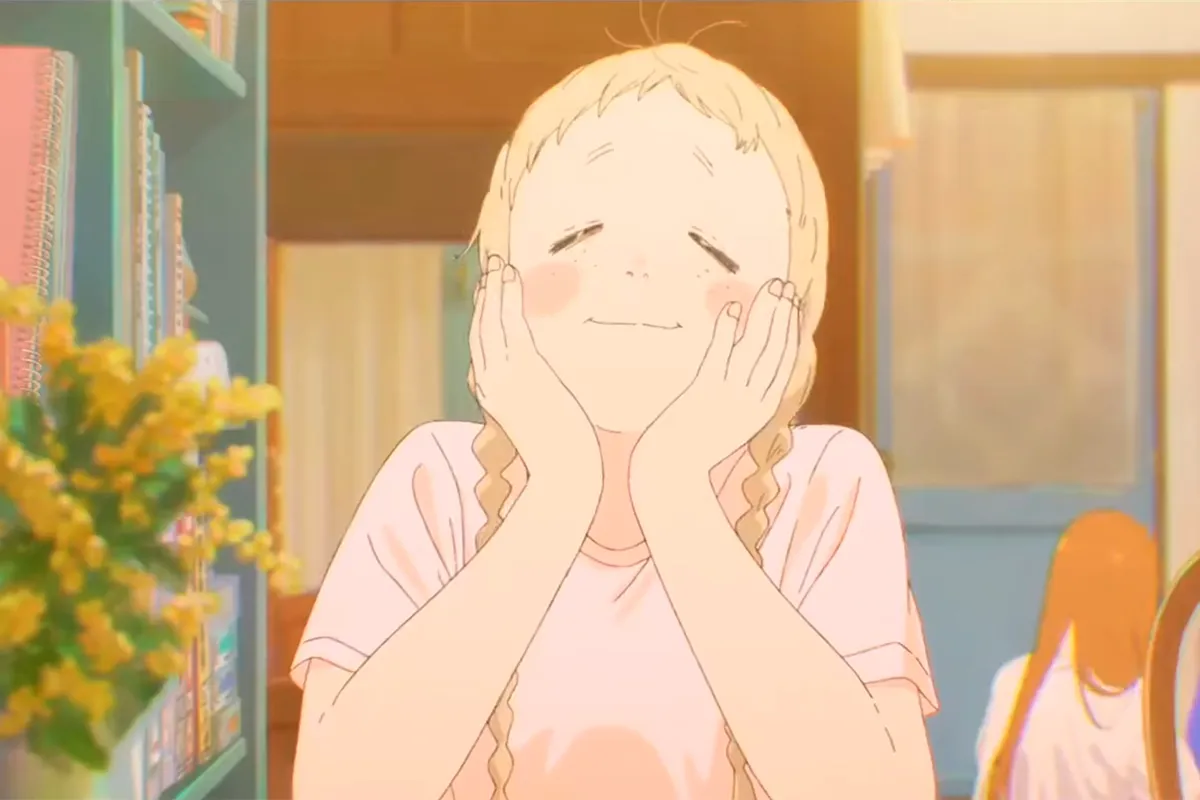Totsuko Higurashi possesses an extraordinary ability since childhood: she can “see” the colors of everything around her. This teenage girl attends a Catholic school and usually conceals her unique trait, although it involuntarily surfaces from time to time, especially when she encounters Kimi Sakunaga, a classmate whose color seems particularly captivating. When Kimi stops attending classes, Totsuko sets out to find her and discovers her in a small bookstore where Kimi works and learns to play the guitar in her free time. Rui Kagehira, a quiet young man who dreams of pursuing music, joins the two girls, and together they form a band. Each of them harbors their own secrets, but together they are capable of more, “mixing” their “colors” through their creative endeavors.

Scene from the anime “Your Color”
“Your Color” is the new feature film by Naoko Yamada, known for projects such as “K-On!”, “A Silent Voice,” and “The Tale of the Heike.” In the world of Japanese animation, Yamada is a rare example of a woman who has achieved widespread recognition, making each of her new works a subject of discussion. Moreover, there’s always something to talk about: Yamada, as both a screenwriter and director, excels at dissecting human souls, vividly showcasing all the facets and subtleties of the characters involved. “Your Color” is no exception.
Animation and Emotional Depth
Like Yamada’s other works, this new film stands out with its highly detailed and authentic animation. The characters move naturally, each with their own nuances and peculiarities, from Sakunaga’s heavy gait when she’s upset to Totsuko’s nervous handwriting. The mastery of conveying emotions through movement is particularly evident in the ballet scenes. Totsuko studied dance as a child and occasionally recalls her past experiences. These movements, not without grace but not perfectly polished either, appear incredibly lifelike and, at crucial moments, reflect the heroine’s anxiety, joy, and thoughtfulness.

Scene from the anime “Your Color”
Attention to Detail
The attention to detail is remarkable. This is evident in the portrayal of Catholicism in the film: quotes from the Bible appear frequently, the choir sings well-known Christian hymns, Totsuko’s school uniform has an ichthys symbol sewn on it, and even the young ballerinas practice a dance from “The Sound of Music,” a film particularly beloved in Catholic families. However, religion serves as a backdrop; it never overshadows the main message or takes center stage.
On the other hand, music plays a significant role in the plot, though its portrayal is only partially accurate. For example, Rui’s playing of the theremin is shown with incredible detail, but the performance of music on the synthesizer seems much more exaggerated. This is doubly surprising given the accurate depiction of the sound recording software on Rui’s laptop. The instruments, by the way, are also quite real, and you can find their exact models if you wish (Totsuko, for example, learns to play on a cheap Casio SA-46 synthesizer).
The Interplay of Story and Nuance
Details are undoubtedly important, but the film wouldn’t come together solely based on nuances. They merely frame the main plot, making it more believable and vivid. The measured and calm pace of the narrative interestingly contrasts with the characters’ personal difficulties, which don’t feel like the end of the world, yet are still complex enough not to be ignored. Each character has their own subtleties, which ultimately reflect in the colors that Totsuko sees and in the music that each member of the band creates. Throughout the film, the viewer is shown only fragments, in order to present the result of their work at the end: Totsuko’s track, for example, is much more lively, energetic, and joyful, while Kimi’s music sounds much sadder and more melancholic, reflecting the girl’s inner turmoil.

Scene from the anime “Your Color”
The Significance of Color
It would be strange to talk about an anime titled “Your Color” without addressing the theme of color itself. The central trio on the poster reveals the essence (although it’s not immediately obvious in the film): the paradigm of classical color theory in action. Kimi embodies blue: the hue clearly serves as a familiar reflection of sadness, freedom, imagination, and inspiration. Green for Rui is a symbol of protection, healing, and nature. Finally, red (or rather pink) for Totsuko is not about threat, as it is often interpreted, but primarily about love and safety. Totsuko is the link between the trio and one of the main driving forces in the group. The colors reflecting the characters are present literally everywhere: almost every frame is filled with red, green, or blue, often with one of them predominating. Sometimes yellow is mixed into the frame, the color of another character, the nun Hiyoshiko.
The characters are not afraid to change their colors: for the final performance, for example, Rui dresses in violet, and Kimi’s appearance is dominated by white. All against the backdrop of a stained-glass window with a predominance of not the RGB gamut, but CMYK shades (with Key, i.e. black, represented by the guitar and the star on Kimi’s chest). What better representation of the metamorphoses that the characters have undergone?
“Your Color” serves as a pleasant reminder of the importance of staying true to oneself and the value of human connections, without moralizing or imposing the author’s position. Simple in its message and elegant in its form, the anime leaves an incredibly warm and pleasant aftertaste, something that is needed more than ever in our troubled times.